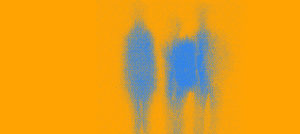An insight into the Martin Ennals Award’s nomination process

The Martin Ennals Award for Human Rights Defenders (MEA) is a unique collaboration among ten of the world’s leading human rights organizations with the aim of providing protection to human rights defenders worldwide. In view of the upcoming Martin Ennals Award Ceremony on 11 February 2021, we talked to Hans Thoolen, founder of the Martin Ennals Foundation and (non-voting) President of the Award Jury, to learn more about the Award’s nomination process.
The Martin Ennals Award Finalists 2021 will be announced next Monday, January 18th. Three exceptional human rights defenders have been nominated for this year’s edition from a pool of more than 50 nominations from around the world. Who can be nominated?
The Martin Ennals Award (MEA) nomination procedure is completely open: anyone can be nominated if the motivation is well substantiated and the individual or organization meets the MEA criteria, namely, to be a human rights defender at risk.
Ten of the world’s leading human rights organizations form part of the Martin Ennals Award Jury. Who are they and what is their role?
Our Jury provides expertise and research capacity on defenders and the contexts they work in, unparalleled by any other award. Moreover, they play an important role in giving support and protective publicity to the selected human rights defenders. Together, they form the backbone of the Martin Ennals Award: Amnesty International, Bread for the World, the International Commission of Jurists, the FIDH, Front Line Defenders, Human Rights First, Human Rights Watch, HURIDOCS, the World Organization against Torture and the International Service for Human Rights.
The Regional Panel is also of great importance in this process. What can you tell us about it?
Regional NGOs – which have grown in number and importance over the last decade – provide first-hand knowledge and expertise on the contexts in which MEA candidates work. In certain cases, they also maintain personal contact with the candidates. They play an important role in distributing the call for applications within their regional networks and in triggering media attention on the shortlisted Finalists.
How does the selection process work? Who is responsible for doing the research and background checks on the nominees?
The responsibility of the selection process lies mostly with the organizations that are members of our Jury or the Regional Panel. However, the Martin Ennals Foundation acts as a secretariat to the process, contributing a first due diligence review of candidates. The Jury is in charge of screening every application before arriving at a shortlist of up to ten candidates. Those ten are then each given a ‘rapporteur’ by the NGOs on the Jury. Each rapporteur delivers a report, with a thorough assessment of the candidate’s work, personal situation and achievements for human rights. The Jury then meets to consider each case. Through in-depth – and sometimes difficult – discussions, the members of the Jury select three Finalists usually by consensus.
What distinguishes the Finalists from the other candidates? Which criteria will guide the Jury’s choice and how does the Jury select the Laureate out of the three Finalists?
Our independent Jury is master of its own rules and procedures, but there is an internal set of criteria and (after 25 years!) a fair degree of jurisprudence. The main consideration is the quality of the work of the Defenders and their need for protection. The Jury also considers who would benefit most from the Award and from the public attention it would bring. Gender and geographic considerations also play a role in the evaluation.
The Award Ceremony takes place in less than a month. Can you remind us what the Award is composed of both for the Finalists and Laureate?
The Laureate receives between 30,000-50,000 Swiss francs intended to support his or her work in the field of human rights. The two Finalists receive between 15000-20,000Swiss francs each for the same purpose. However, the importance of the Award is not just in the money. Human Rights Defenders are not necessarily well respected in their own communities. Granting them international recognition for their work is instrumental. Protective publicity is also very important. Not just in international media but in regional media, as well as online.
What can you tell us about the connecting dots between the 2021 Finalists? What unites them?
Courage. All three are working in conditions that are inimical to human rights work. All three know the risks of standing up and refuse to be cowed. They pay with their freedom, the least we can do is pay attention!

